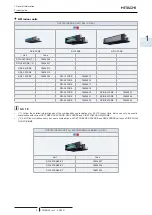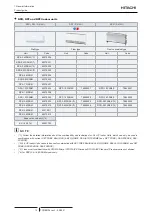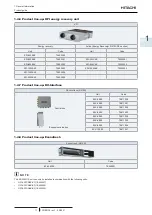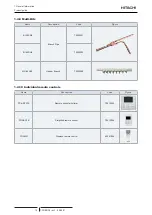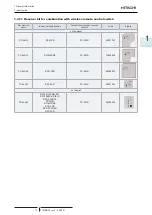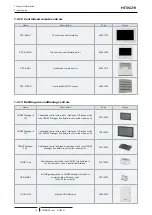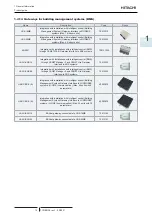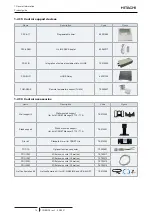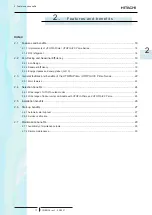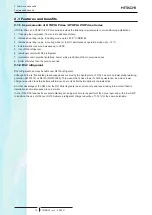
1.2 Applied symbols
During normal air conditioning system design work or unit installation, greater attention must be paid in certain situations
requiring particular care in order to avoid damage to the unit, the installation or the building or property.
Situations that jeopardise the safety of those in the surrounding area or that put the unit itself at risk will be clearly
indicated in this manual.
A series of special symbols will be used to clearly identify these situations.
Pay close attention to these symbols and to the messages following them, as your safety and that of others depends on it.
!
D A N G E R
• The text following this symbol contains information and instructions relating directly to your safety, in addition to hazards
or unsafe practices which could result in severe personal injuries or death.
• Not taking these instructions into account could lead to serious, very serious or even fatal injuries to you and others in the
proximities of the unit.
In the texts following the danger symbol you can also find information on safe procedures during unit installation.
!
C A U T I O N
• The text following this symbol contains information and instructions relating directly to your safety, in addition to hazards or unsafe
practices which could result in minor personal injury or product or property damage
• Not taking these instructions into account could lead to minor injuries to you and others in the proximities of the unit.
• Not taking these instructions into account could lead to unit damage.
In the texts following the caution symbol you can also find information on safe procedures during unit installation.
?
N O T E
• The text following this symbol contains information or instructions that may be of use or that require a more thorough explanation.
• Instructions regarding inspections to be made on unit parts or systems may also be included.
1.3 Norms and Regulations
Following Regulation EU Nº 517/2014 on Certain Fluorinated Greenhouse gases, it is mandatory to fill in the label
attached to the unit with the total amount of refrigerant charged on the installation.
Do not vent R32 into the atmosphere: R32 is fluorinated greenhouse gas covered by the Kyoto protocol global warming
potential (GWP) R32 = 675.
Do not vent R410A into the atmosphere: R410A are fluorinated greenhouse gases covered by the Kyoto protocol global
warming potential (GWP) R410A = 2088.
Tn of CO
2
equivalent of fluorinated greenhouse gases contained is calculated by indicated GWP * Total Charge (in kg)
indicated in the product label and divided by 1000.
Appropriate refrigerant
The refrigerant used in each unit is identified on the specification label and manuals of the unit. Hitachi shall not be held
liable for any failure, trouble, malfunction or accident caused by units illegally charged with refrigerants other than the
specified one.
Consequences of charging non-specified refrigerant
It may cause mechanical failure, malfunction and other accidents.
It may cause operational failure of protection and safety devices of air conditioners.
It may also cause lubrication failure of the sliding part of the compressor due to deterioration of refrigerant oil.
In particular, hydrocarbon refrigerants (such as propane, R441A, R443A, GF-08, etc.) are not allowed, since these are
combustible and may cause major accidents such as fire and explosion in case of improper handling.
Once a non-specified refrigerant has been charged, no further servicing (including draining of refrigerant) shall be
performed, even in case of malfunction. Improper handling of refrigerant may be a cause of fire and explosion, and
servicing in such cases may be considered an illegal act.
End clients and costumers shall be informed that servicing is not approved, and the installer who charged the
non-specified refrigerant shall be asked to fix the unit.
Hitachi will accept no responsibility for units that have been charged with non-specified refrigerant once.
1 General Information
Applied symbols
TCGB0136 rev.1 - 05/2021
3
1

















